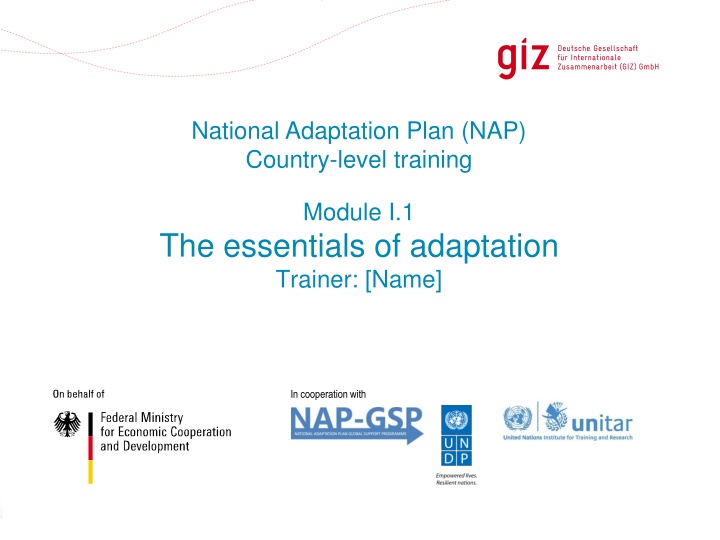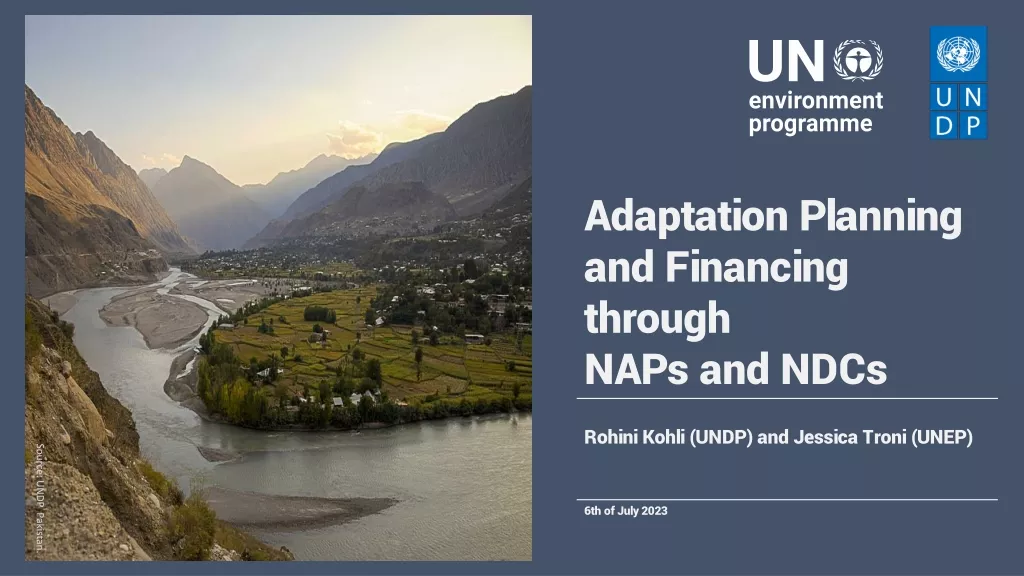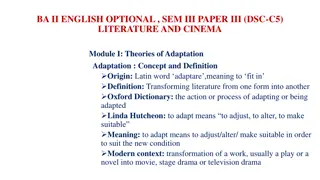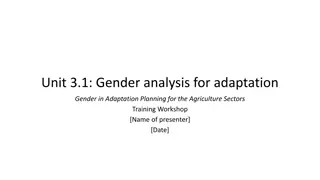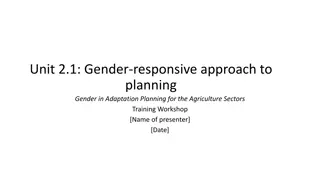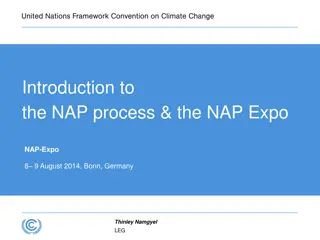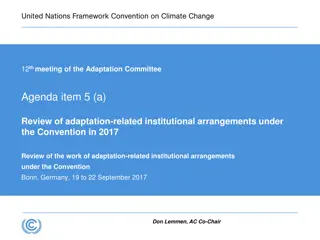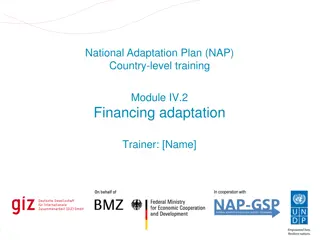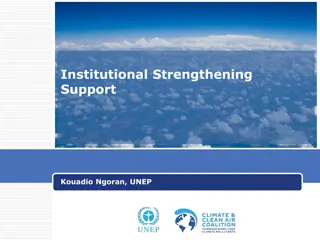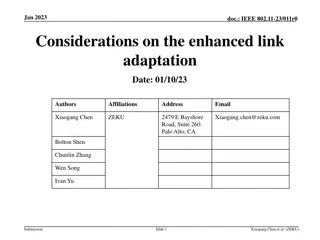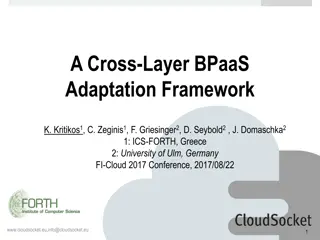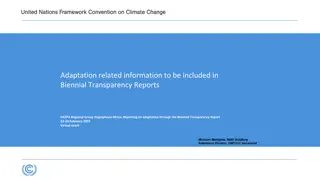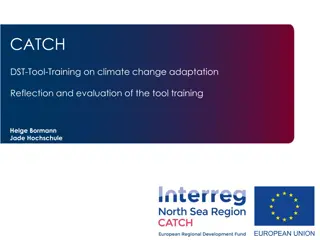Essential Training on National Adaptation Planning
This training module focuses on enhancing understanding and capacities for National Adaptation Planning (NAP) processes. It covers the basics of climate change, adaptation concepts, challenges, and the importance of adaptation for development. Through interactive sessions and case studies, participants will learn to analyze the inter-linkages between adaptation and development while preparing for both current and future climate impacts.
Download Presentation

Please find below an Image/Link to download the presentation.
The content on the website is provided AS IS for your information and personal use only. It may not be sold, licensed, or shared on other websites without obtaining consent from the author.If you encounter any issues during the download, it is possible that the publisher has removed the file from their server.
You are allowed to download the files provided on this website for personal or commercial use, subject to the condition that they are used lawfully. All files are the property of their respective owners.
The content on the website is provided AS IS for your information and personal use only. It may not be sold, licensed, or shared on other websites without obtaining consent from the author.
E N D
Presentation Transcript
National Adaptation Plan (NAP) Country-level training Module I.1 The essentials of adaptation Trainer: [Name] In cooperation with Slide 1
Concept of the NAP training - I Objectives Improve understanding and raise awareness for NAP process Strengthen the capacities of country teams to realize key NAP tasks Familiarize with NAP elements, guidelines, support channels and links to other national processes Slide 2
Concept of the NAP training - II Method / Approach Interactive adult learning approach: Harvard Case Method Emphasis on case work/exercise in groups Modular training along NAP Technical Guidelines Tailored to national context Slide 3
Overview of this module Climate change: a serious risk for development Adaptation a definition Adaptation options Fine, but is it really adaptation? Adaptation from an economic point of view Challenges in adaptation planning Slide 4
What can you expect to learn from this session? Ensure common understanding regarding basics of climate change and adaptation Analyze inter-linkages between adaptation and development Reflect challenges and benefits of adaptation Slide 5
Climate change: a serious risk for development 06.10.2024 Slide 6
Climate change: a serious risk for development 06.10.2024 Slide 7
Adaptation to climate change: a definition Adaptation vs. mitigation Human-driven adjustments in ecological, social or economic systems or policy processes, in response to actual or expected climate stimuli and their effects or impacts (Definition by the Least Developed Countries Expert Group, LEG) actual or expected Reactive component: adapting to current climate Proactive/preventive component: being prepared for coming events adjustments in ecological, social or economic systems or policy processes Adaptation related to various dimensions complex challenge Result of an iterative process Slide 8
Adaptation options - I Policy Examples: Adjust development plans; improve regulations; mainstream adaptation; adjust incentive systems; participation of affected communities No-/low-regret options Examples: Avoid building in high risk areas; soil conservation Technical solutions Examples: Dyke construction; efficient irrigation systems Slide 9
Adaptation options - II Research Examples: Regional climate models; climate-resilient breeds/species Capacity development Examples: Train technical staff in ministries in interpreting climate data; improve management skills Slide 10
Fine, but is it really adaptation? New and additional : important criterion for the allocation of adaptation finance Adaptation measures are part of a continuum: Specifically climate-change related activities Development as usual , not considering climate change Difference between adaptation and development as usual is more in defining the problem and strategies Both may complement each other, but also act against one another Necessity to integrate adaptation into development planning Slide 11
Example: Business-as-usual irrigation project Business-as-usual (BAU) With climate change 1) Design, construction & operation of surface water system Climate-resilient design, construction & operation 2) Technical support to farmers Technical support to farmers on climate change 3) Support for institutional development and capacity building Support for institutional development and capacity building specifically concerning climate change adaptation BAU development cost Additional adaptation cost (LDCF) Slide 12
Adaptation from an economic point of view: Timely measures can help to save cost Troumass e Bridge (St. Lucia) Deep sea port (Dominica) Norman Manley Law School (Jamaica) Grand Palazzo Hotel (St. Thomas) Infrastructure Original project cost 57,000,000 685,000 185,000 28,000,000 (in US$) Cost of post-disaster reconstruction Cost of risk management as % of original construction cost Cost of risk management as % of reconstruction cost 2,310,000 28,800 32,000 5,308,000 11.5% 1.9% 10.8% 0.1% 28.0% 45.0% 62.4% 0.5% RMNH Risk management of natural hazards Source: adapted from Bettencourt et al. 2006 Slide 13
Challenges in adaptation planning Are politicians willing to promote adaptation? Are administrations willing and able to implement adaptation measures? Is it possible to provide the funds required for effective adaptation? How does adaptation interfere with economic goals? Is there a broad consensus about the need to adapt? Can citizens be adequately involved in adaptation planning and implementation? Are proven technologies for adaptation known and accessible? Political/institutional issues Economic / financial issues Social issues Technical issues Slide 14
Exercise: Challenges for effective adaptation processes in your country Which of the four mentioned challenges of adaptation is especially dominant in the concrete context in your country: Political/institutional issues Economic / financial issues Social issues Technical issues Each corner of the room represents one of the four categories. You should go into that corner that best reflects your opinion. The moderator will arrange a discussion among the four groups and invite you to justify your choice. Slide 15
Imprint Published by Deutsche Gesellschaft f r Internationale Zusammenarbeit (GIZ) GmbH This presentation is part of a NAP country-level training that has been developed by GIZ on behalf of BMZ and in cooperation with the NAP Global Support Programme (NAP-GSP), in particular UNDP and UNITAR. Climate Policy Support Project Dag-Hammarskj ld-Weg 1-5 65760 Eschborn, Germany T +49 61 96 79-0 F +49 61 96 79-1115 The training is designed to support countries in setting up a National Adaptation Plan (NAP) process. It builds on the NAP Technical Guidelines developed by the Least- Developed Countries Expert Group (LEG). Contact E climate@giz.de I www.giz.de/climate You are welcome to use the slides, as long as you do not alter its content or design (including the logos), nor this imprint. If you have any questions regarding the training, please contact Till Below or Nele B nner at GIZ. For questions related to the Technical Guidelines, please refer to the UNFCCC s NAP Support Portal. Responsible Nele B nner, GIZ Authors Nele B nner, Annette Lutz Contributions by Stefanie D mig As a federally owned enterprise, the Deutsche Gesellschaft f r Internationale Zusammenarbeit (GIZ) GmbH supports the German Government in achieving its objectives in the field of international cooperation for sustainable development. GIZ also engages in human resource development, advanced training and dialogue. Slide 16
